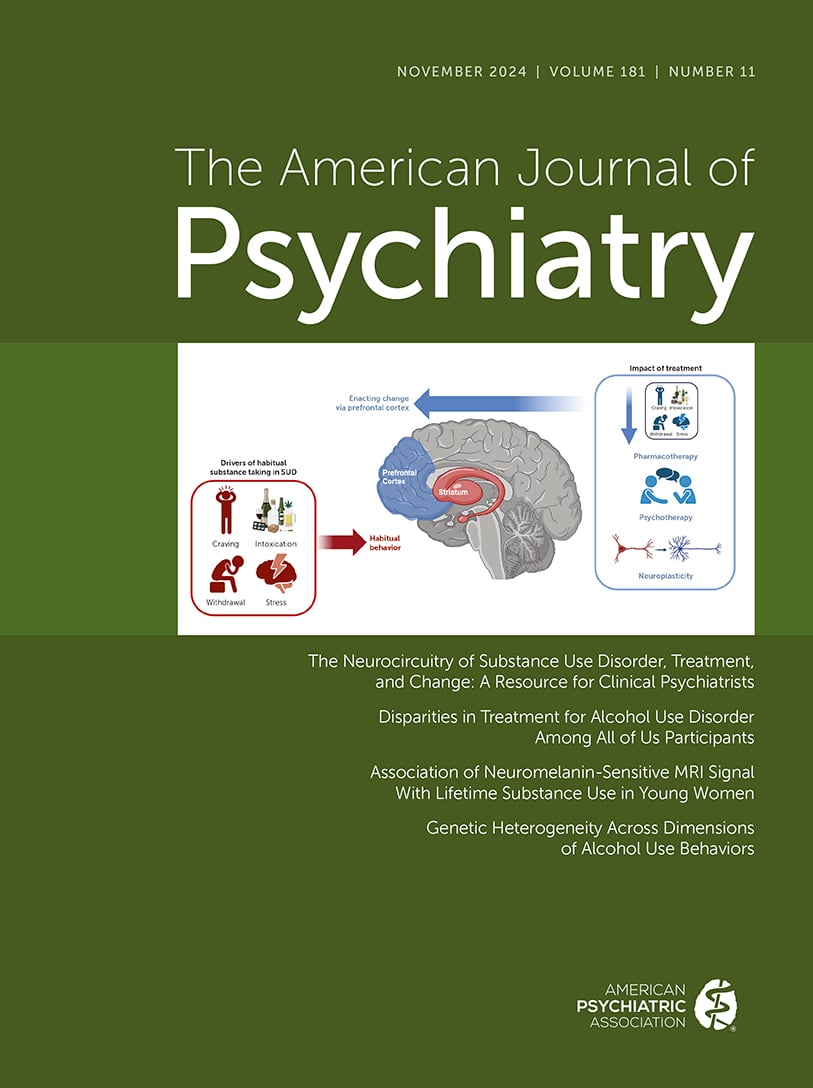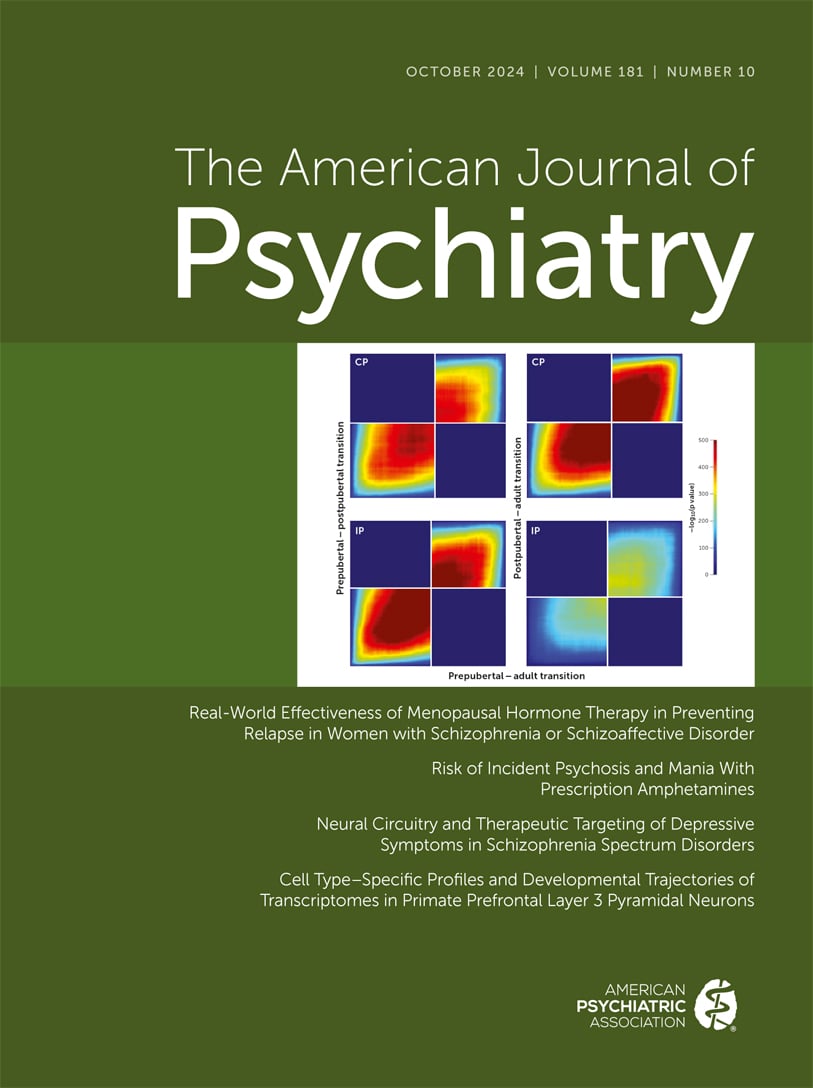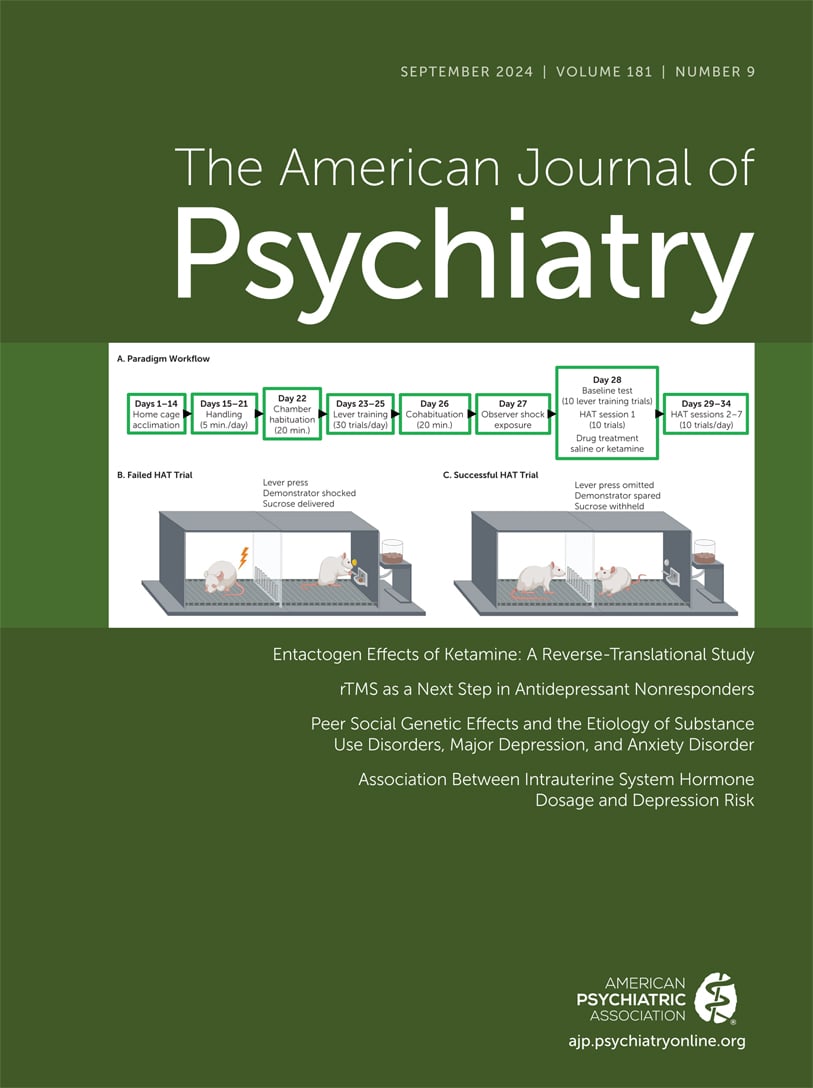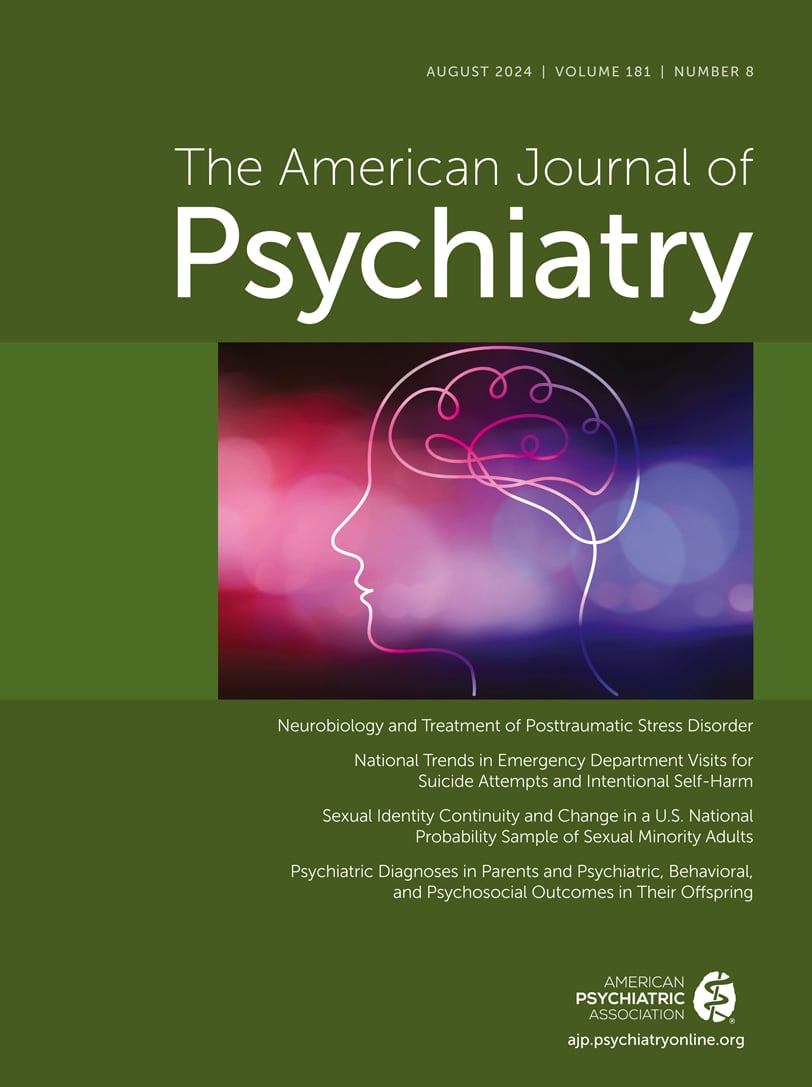American Journal of Psychiatry
- Volume 102
- Number 5
- March 1946
Article
Publication date: 01 March 1946
Pages594–598Therapeutic electric shocks produce some reversible cortical changes, probably together with some irreversible neuronal degeneration and gliosis. The typical memory losses are generally recoverable, and the diversified EEG disturbances tend to disappear ...
https://doi.org/10.1176/ajp.102.5.594Publication date: 01 March 1946
Pages599–601A 55-year-old male with an involutional psychosis precipitated by the traumatic loss of both legs with very painful phantom limbs was treated with electric shock. An improvement in the psychosis and a disappearance of the painful phantom limbs resulted. ...
https://doi.org/10.1176/ajp.102.5.599Publication date: 01 March 1946
Pages602–6081. The case histories of psychotics in the military personnel, and the effect of the shock therapies was reviewed and analyzed. The response to treatment was found to differ markedly from the response observed in civil practice. 2. Various modifications ...
https://doi.org/10.1176/ajp.102.5.602Publication date: 01 March 1946
Pages609–618Dr. Morris Fishbein in his introduction to a series of articles printed in the Journal of the American Medical Association in 1931 on the Indispensable Use of Narcotic Drugs, has presented to the medical profession some excellent suggestions dealing with ...
https://doi.org/10.1176/ajp.102.5.609Publication date: 01 March 1946
Pages619–628In conclusion and to answer more particularly the questions listed at the beginning of this article, it should be observed that military justice in determining the issue of mental accountability is not controlled by any conventional, legal or medical ...
https://doi.org/10.1176/ajp.102.5.619Publication date: 01 March 1946
Pages631–640This survey indicates that patients suffering from unfamiliar diseases, of which schistosomiasis is an example, tend to develop emotional reactions which impede recovery, such as anxiety, resentment and confusion. To keep disability at a minimum, ...
https://doi.org/10.1176/ajp.102.5.631Publication date: 01 March 1946
Pages641–646A series of 58 war neurotic enlisted Air Force returnees from overseas theaters routinely admitted to a United States convalescent hospital were observed for one month without specific psychotherapy. The primary purpose was to determine which patients ...
https://doi.org/10.1176/ajp.102.5.641Publication date: 01 March 1946
Pages647–649Examination of a group of German prisoners of war taken from Cassino after the unprecedentedly heavy bombing on May 15, 1944, showed no instance of concussion or neurosis caused by the bombing.
https://doi.org/10.1176/ajp.102.5.647Publication date: 01 March 1946
Pages650–657The psychodynamics of confinement of wartime military prisoners was discussed. The constructive and destructive factors affecting the men were mentioned. The abandonment of diagnostic labels has enabled the psychiatrists to look upon the military ...
https://doi.org/10.1176/ajp.102.5.650Publication date: 01 March 1946
Pages658–665It is impossible to make combat itself any less dangerous or pleasant. It is also impossible to improve to any great degree the inherent emotional stamina of our manpower. It is feasible and essential, to prepare men emotionally in such a way that their ...
https://doi.org/10.1176/ajp.102.5.658Publication date: 01 March 1946
Pages666–669This is a preliminary report of our clinical experiences and treatment of 45 patients afflicted with hysterical deafness. These patients were given sodium pentothal narcosynthesis. Of this group 16 had been overseas in combat; 14 had been overseas, but ...
https://doi.org/10.1176/ajp.102.5.666Publication date: 01 March 1946
Pages670–673Twelve cases were observed showing an acute schizophrenic reaction, seemingly precipitated by the sudden emotional readjustments necessitated by leave or furlough. The onset of the symptoms occurred abruptly a few days after these apparently well adjusted ...
https://doi.org/10.1176/ajp.102.5.670Publication date: 01 March 1946
Pages674–6821. Sixty infantry soldiers, 55 Negro and 5 white, were studied to determine the basis for their addiction to marihuana. 2. Case histories reveal a background of psychopathic development and behavior. 3. Eighty-five percent of these men were referred for ...
https://doi.org/10.1176/ajp.102.5.674Publication date: 01 March 1946
Pages683–6871. Uremia may result in irreversible damage to the central nervous system. These tissue changes may so disturb cerebral function as to result in a host of personality disorders. 2. A case of uremic psychosis is reported occurring in a 27-year-old male who ...
https://doi.org/10.1176/ajp.102.5.683Publication date: 01 March 1946
Pages694–700Your committee recognized that it was faced with a complicated problem. On the one hand, it had the request of the President of the Association that a definite program be proposed. It also received from a small but very articulate minority of the ...
https://doi.org/10.1176/ajp.102.5.694Past Issues
View Issues Archive
Vol. 181 | No. 11

Vol. 181 | No. 10

Vol. 181 | No. 9
